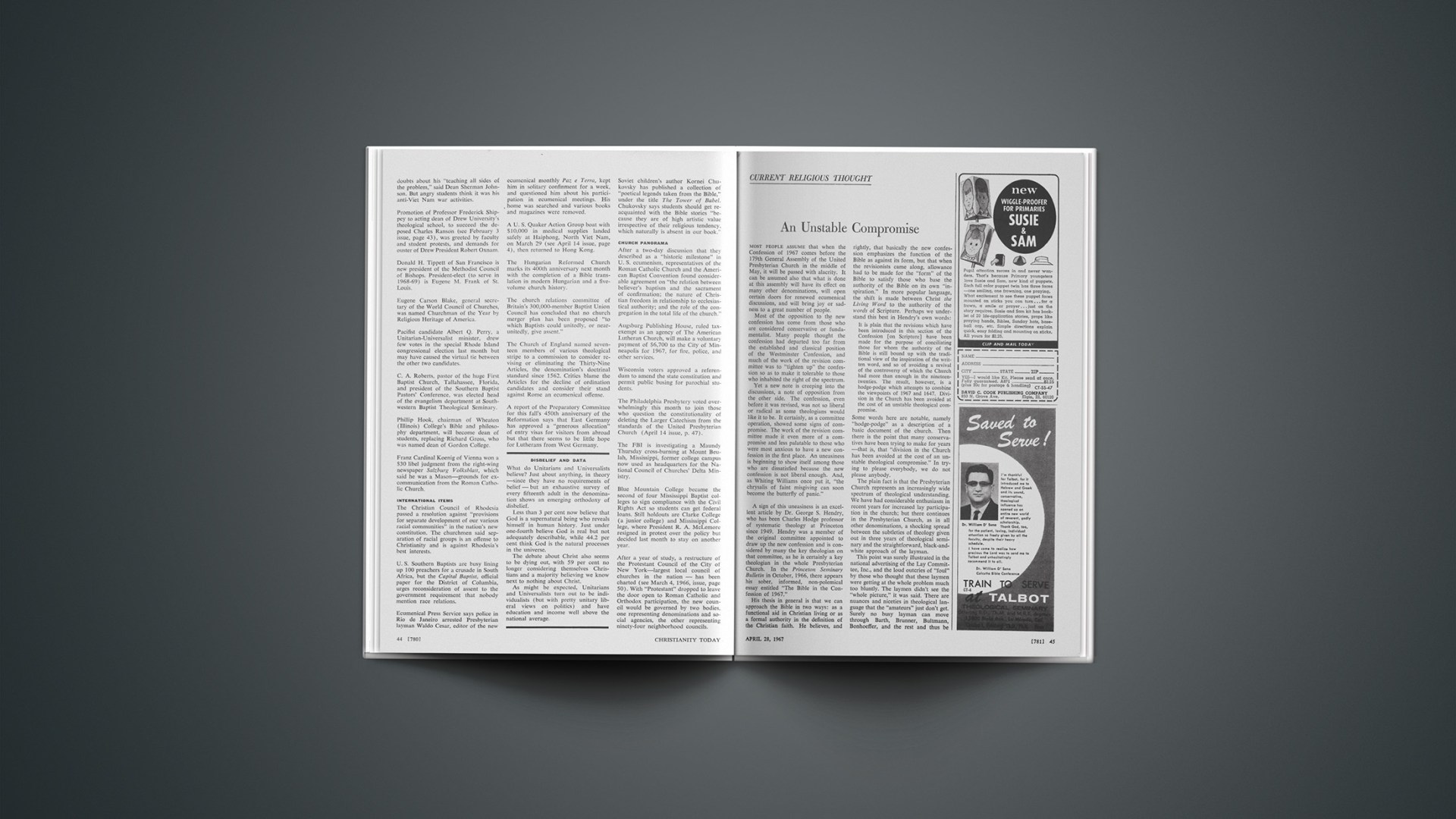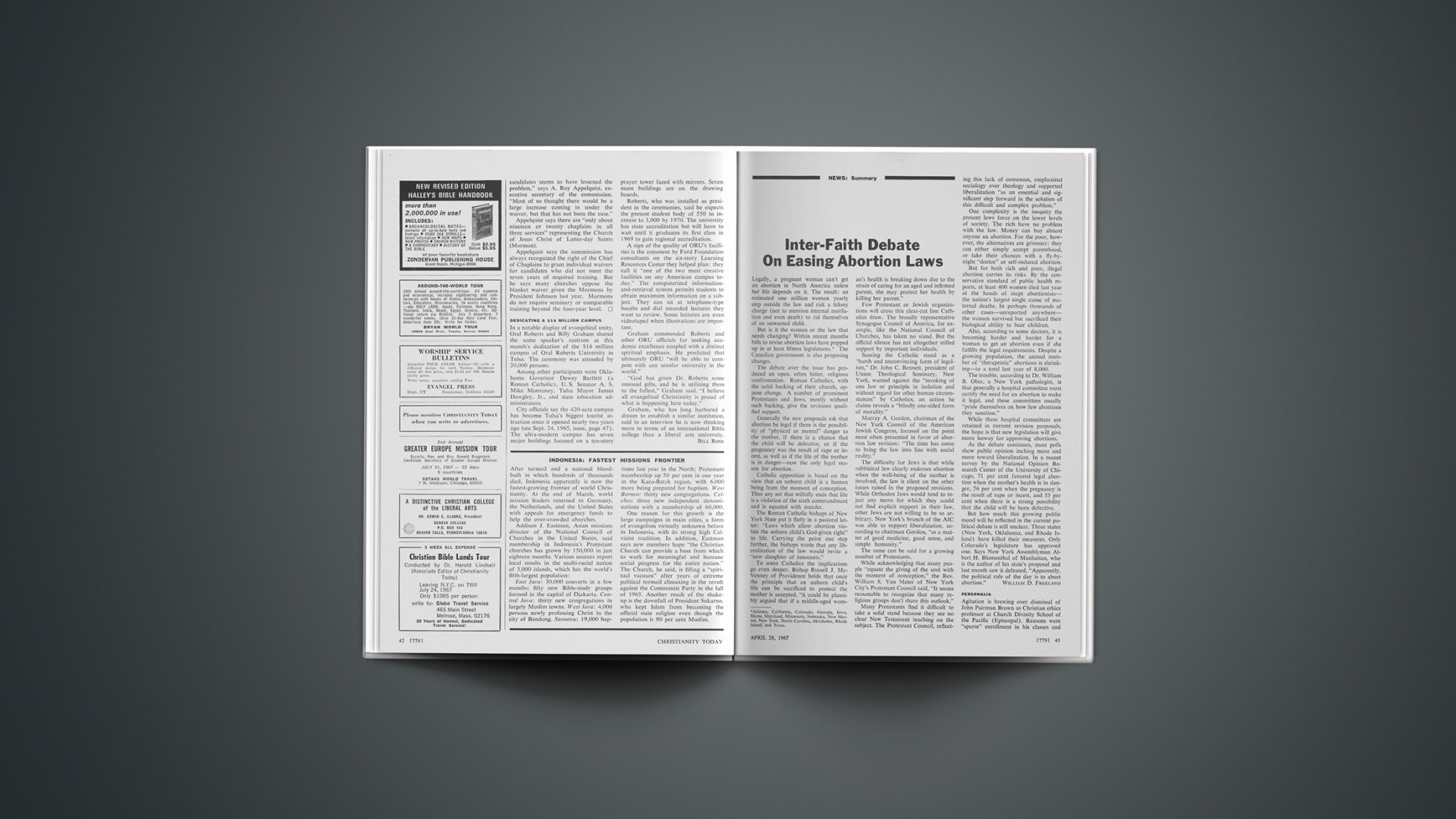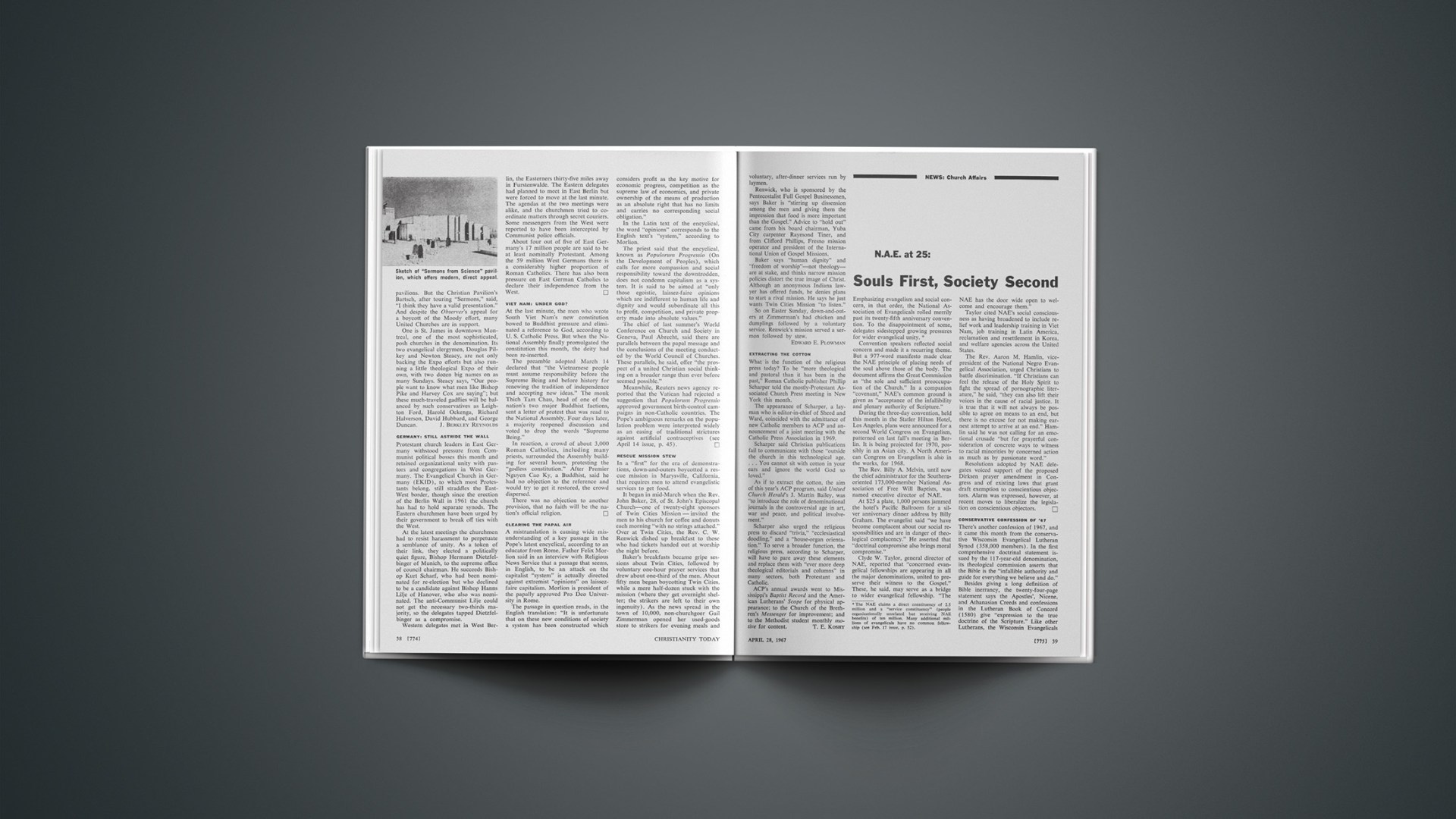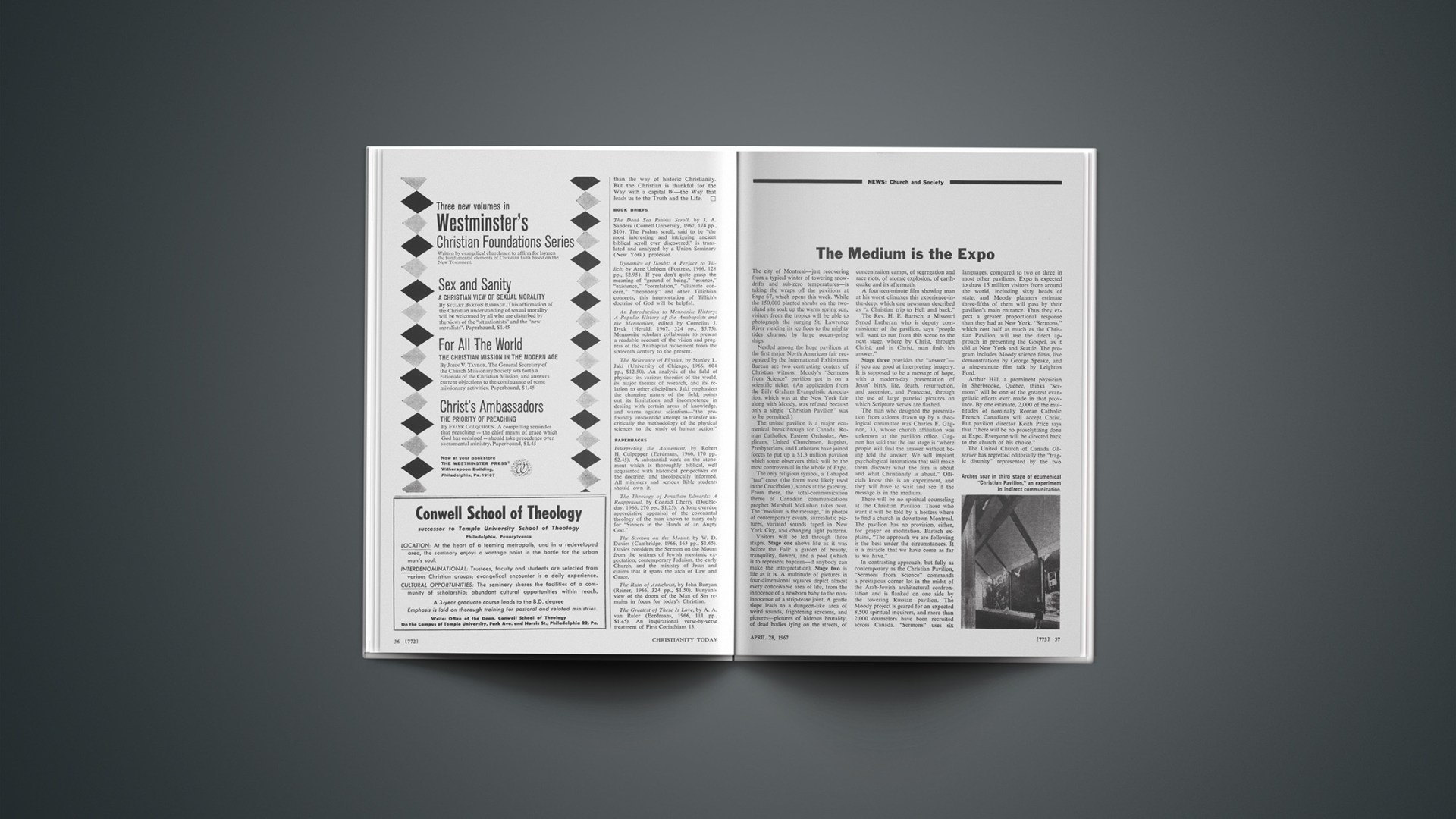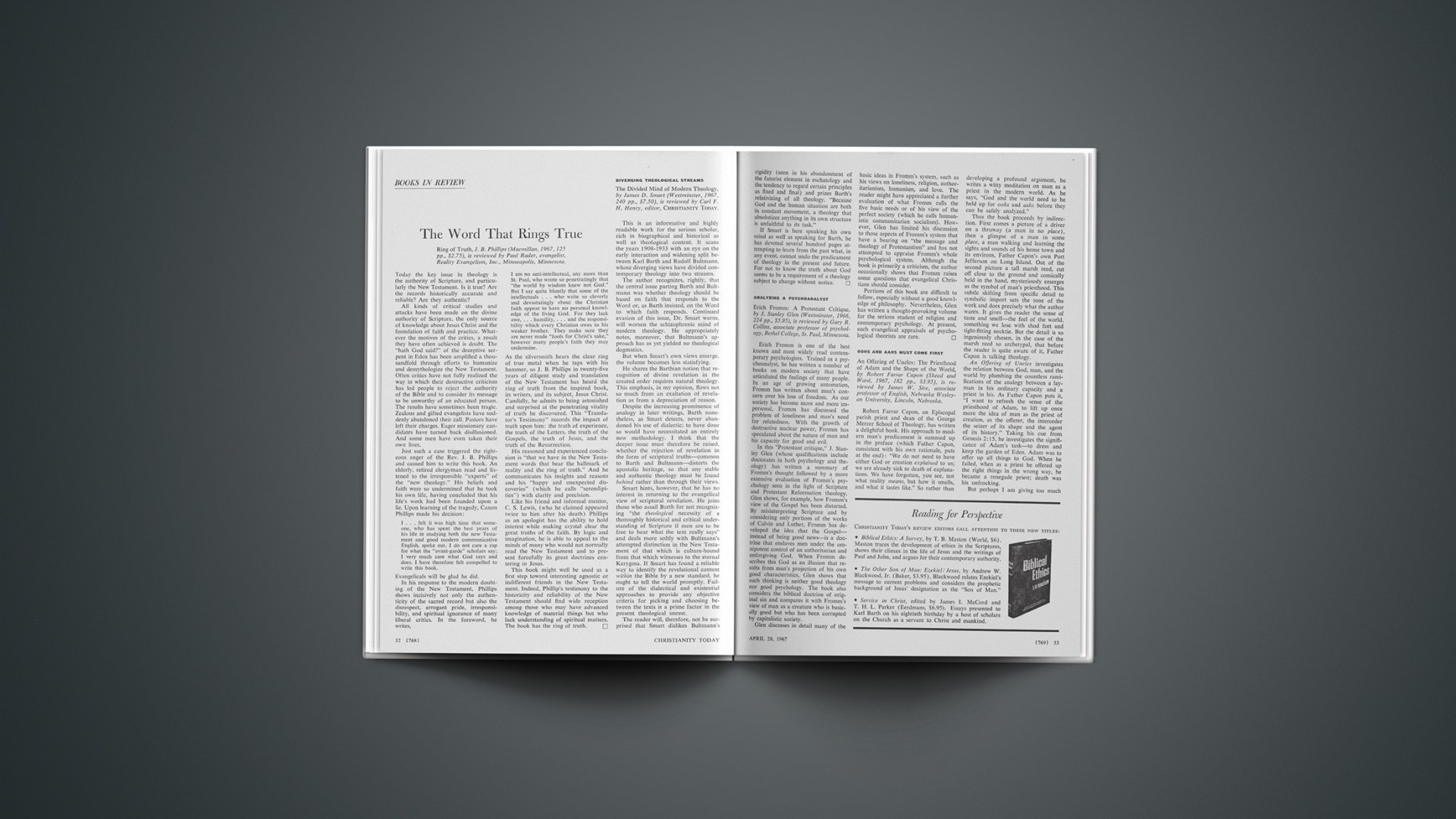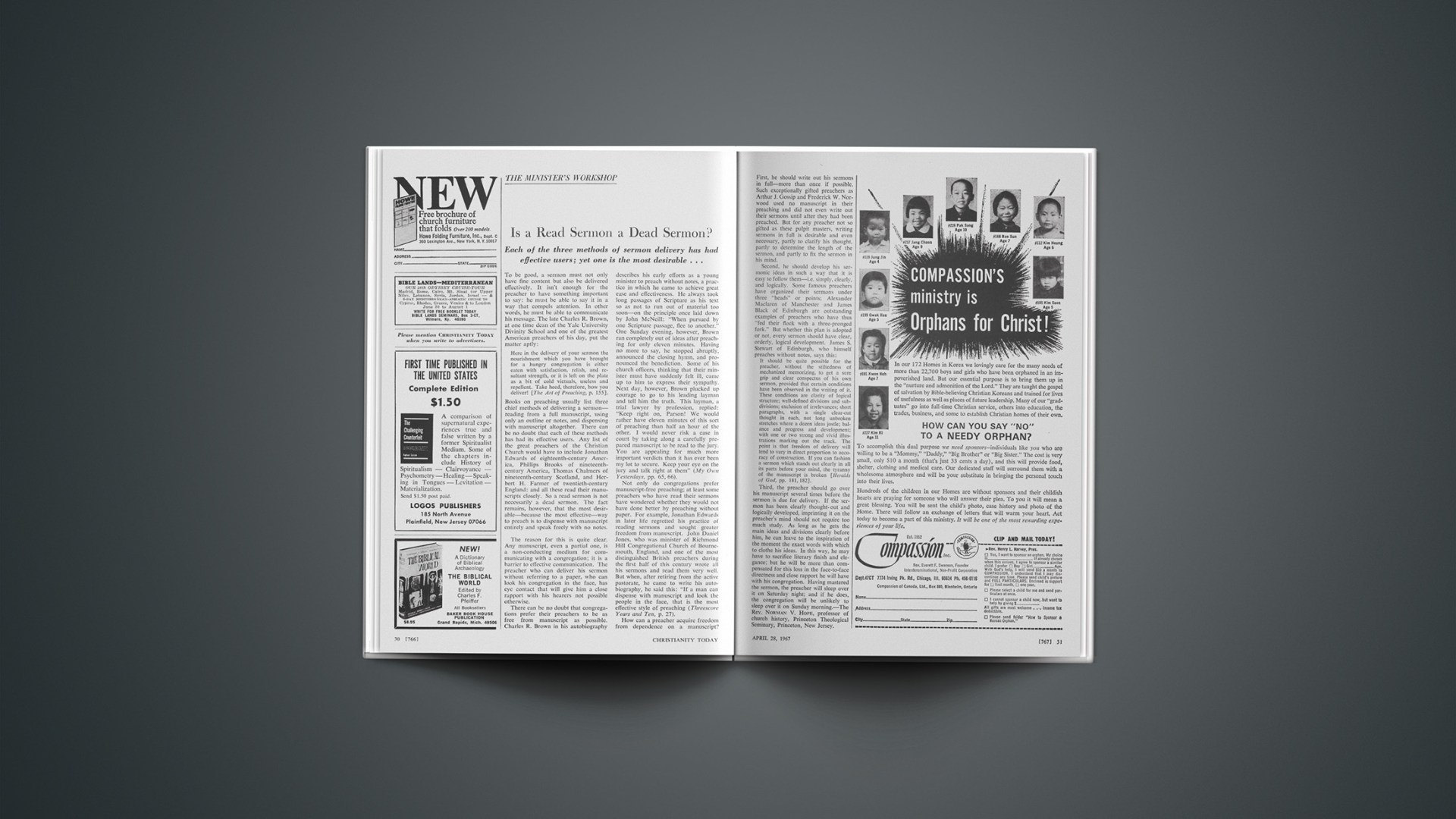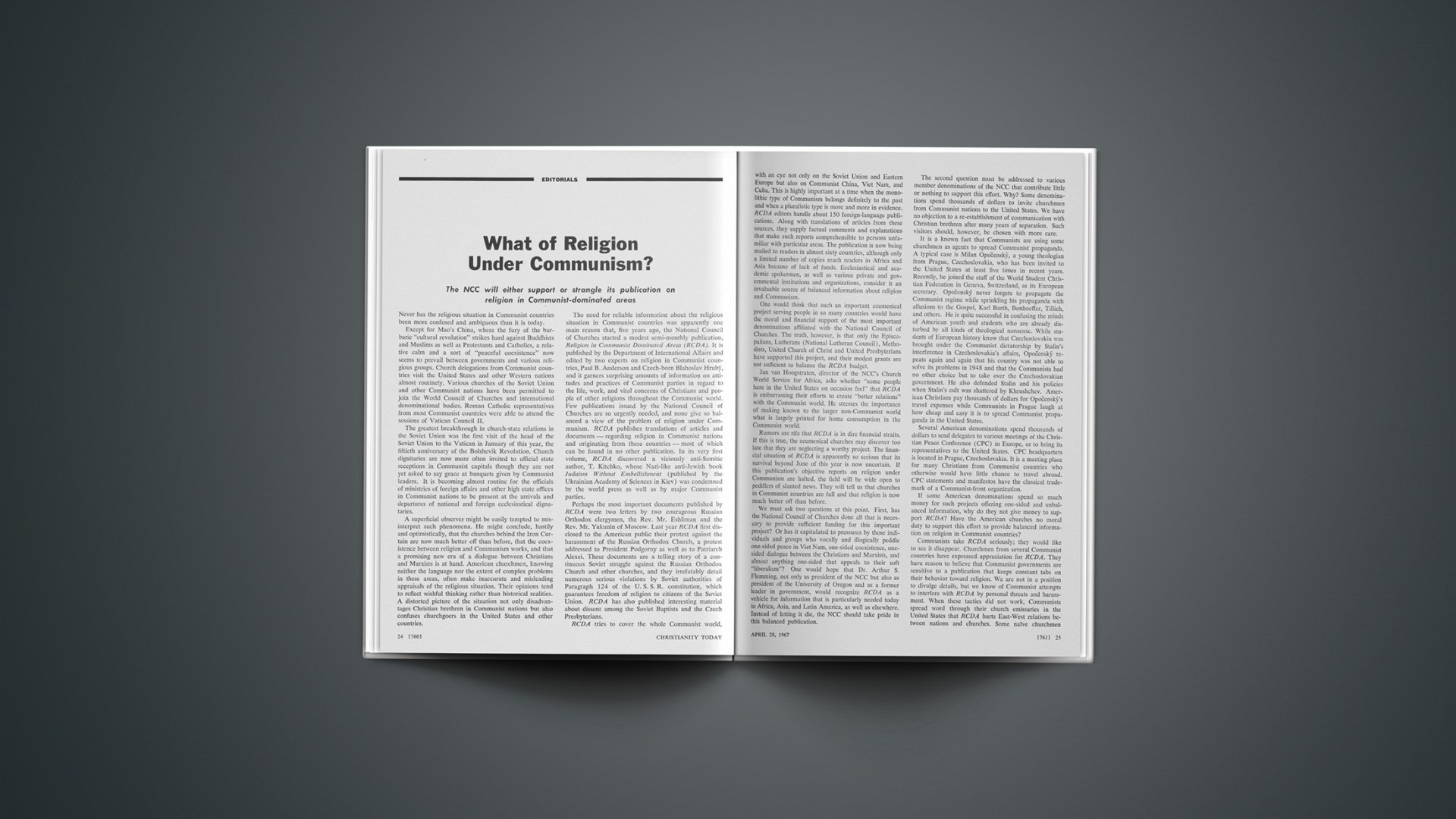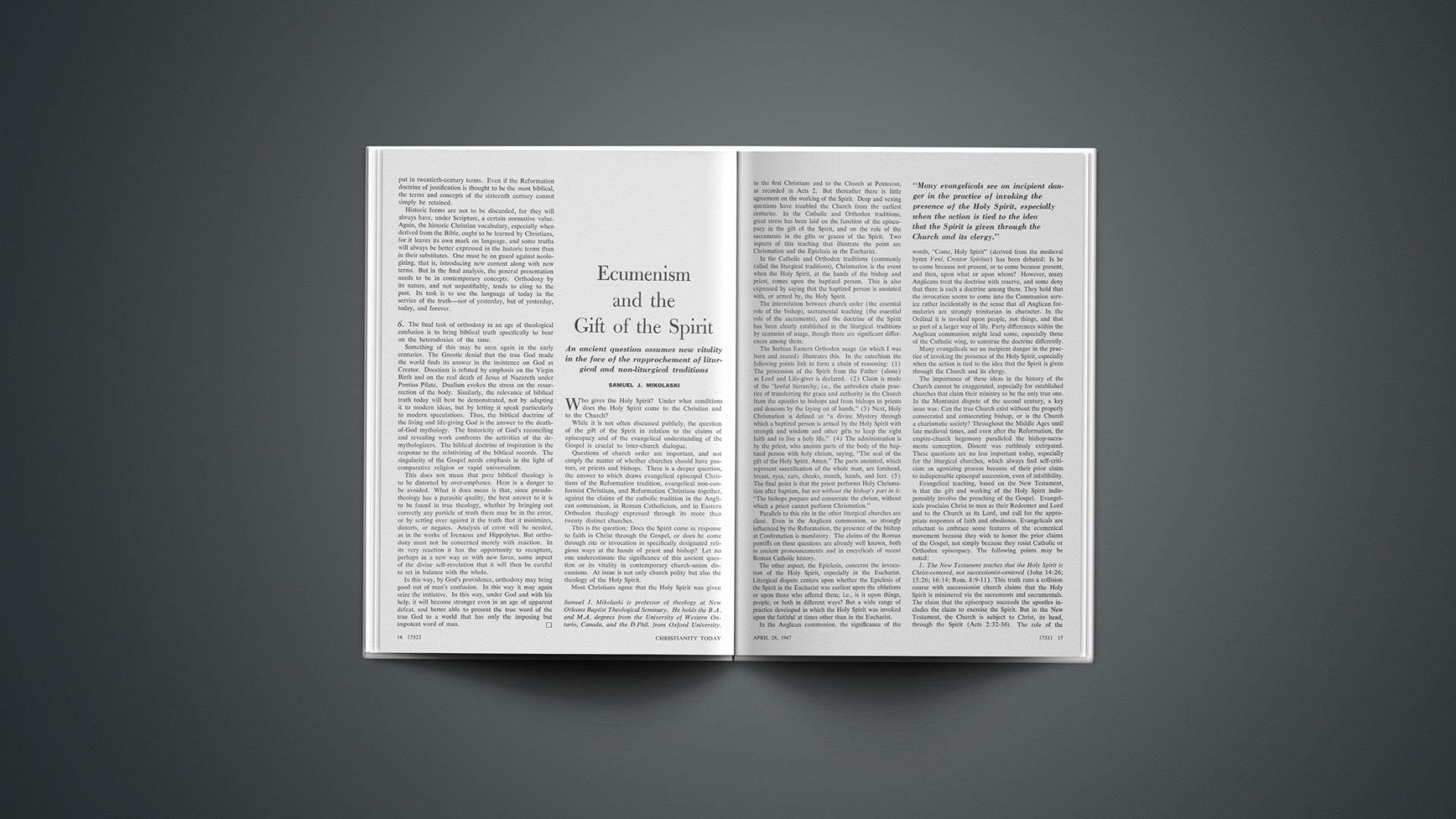Most people assume that when the Confession of 1967 comes before the 179th General Assembly of the United Presbyterian Church in the middle of May, it will be passed with alacrity. It can be assumed also that what is done at this assembly will have its effect on many other denominations, will open certain doors for renewed ecumenical discussions, and will bring joy or sadness to a great number of people.
Most of the opposition to the new confession has come from those who are considered conservative or fundamentalist. Many people thought the confession had departed too far from the established and classical position of the Westminster Confession, and much of the work of the revision committee was to “tighten up” the confession so as to make it tolerable to those who inhabited the right of the spectrum.
Yet a new note is creeping into the discussions, a note of opposition from the other side. The confession, even before it was revised, was not so liberal or radical as some theologians would like it to be. It certainly, as a committee operation, showed some signs of compromise. The work of the revision committee made it even more of a compromise and less palatable to those who were most anxious to have a new confession in the first place. An uneasiness is beginning to show itself among those who are dissatisfied because the new confession is not liberal enough. And, as Whiting Williams once put it, “the chrysalis of faint misgiving can soon become the butterfly of panic.”
A sign of this uneasiness is an excellent article by Dr. George S. Hendry, who has been Charles Hodge professor of systematic theology at Princeton since 1949. Hendry was a member of the original committee appointed to draw up the new confession and is considered by many the key theologian on that committee, as he is certainly a key theologian in the whole Presbyterian Church. In the Princeton Seminary Bulletin in October, 1966, there appears his sober, informed, non-polemical essay entitled “The Bible in the Confession of 1967.”
His thesis in general is that we can approach the Bible in two ways: as a functional aid in Christian living or as a formal authority in the definition of the Christian faith. He believes, and rightly, that basically the new confession emphasizes the function of the Bible as against its form, but that when the revisionists came along, allowance had to be made for the “form” of the Bible to satisfy those who base the authority of the Bible on its own “inspiration.” In more popular language, the shift is made between Christ the Living Word to the authority of the words of Scripture. Perhaps we understand this best in Hendry’s own words:
It is plain that the revisions which have been introduced in this section of the Confession [on Scripture] have been made for the purpose of conciliating those for whom the authority of the Bible is still bound up with the traditional view of the inspiration of the written word, and so of avoiding a revival of the controversy of which the Church had more than enough in the nineteen-twenties. The result, however, is a hodge-podge which attempts to combine the viewpoints of 1967 and 1647. Division in the Church has been avoided at the cost of an unstable theological compromise.
Some words here are notable, namely “hodge-podge” as a description of a basic document of the church. Then there is the point that many conservatives have been trying to make for years—that is, that “division in the Church has been avoided at the cost of an unstable theological compromise.” In trying to please everybody, we do not please anybody.
The plain fact is that the Presbyterian Church represents an increasingly wide spectrum of theological understanding. We have had considerable enthusiasm in recent years for increased lay participation in the church; but there continues in the Presbyterian Church, as in all other denominations, a shocking spread between the subtleties of theology given out in three years of theological seminary and the straightforward, black-and-white approach of the layman.
This point was surely illustrated in the national advertising of the Lay Committee, Inc., and the loud outcries of “foul” by those who thought that these laymen were getting at the whole problem much too bluntly. The laymen didn’t see the “whole picture,” it was said. There are nuances and niceties in theological language that the “amateurs” just don’t get. Surely no busy layman can move through Barth, Brunner, Bultmann, Bonhoeffer, and the rest and thus be able to understand theology today. Therefore laymen mustn’t say things like, “The Bible is true or it isn’t,” “If it isn’t all true, it isn’t true at all,” and “I believe what the Bible says—that’s enough for me.”
Perhaps we are on safer ground if we refer to Dr. Hendry again (and I do not mean this as criticism of him; I use him only for illustration). His book, The Westminster Confession for Today: A Contemporary Interpretation (1966), was the first serious study of the Westminster Confession in a long time. In discussing the mentality of the seventeenth century, which he considers “less congenial” than the mentality of this century, he lists four uncongenial Westminster characteristics:
1. The manner of approach is excessively legalistic.…
2. The authors of the Confession, in common with most of the men of their age, thought it was incumbent upon them to deliver categorical answers to all questions that could be raised concerning the faith, and not only so, but they held the attitude that to each question there is one right answer, and all the others are wrong.
3.… the Confession tends to see everything in terms of black and white: there are no intermediate shades of gray.…
4. The Confession tends to review the drama of redemption as one that is played out between God and the individual.
In regard to the first three of these, we have our problem of “the word of God written” as over against “the Living Word.” Here again is seen the problem of those who want sharp definitions as against those who would sit loose in the existential situation. The fourth of these points has its own interest in reflecting the question of individual versus social salvation.
So here we are. That the thinking of the seventeenth century seems uncongenial to some does not mean that it is uncongenial to others. This is the debate—whether what is said in Westminster is relevant and binding or whether we need something more relevant and perhaps less binding. To put it in other words, we have the old debate over the possibilities or the validity of propositional theology. Although Hendry, and maybe others with him, can agree that the new confession is a “hodge-podge,” the situation is still very clear. Whether the confession is adopted or not, we continue to avoid division in the church “at the cost of an unstable theological compromise.” And what this means is that regardless of what happens at the General Assembly in May, nothing has really been settled about the “position” of the Presbyterian Church.

